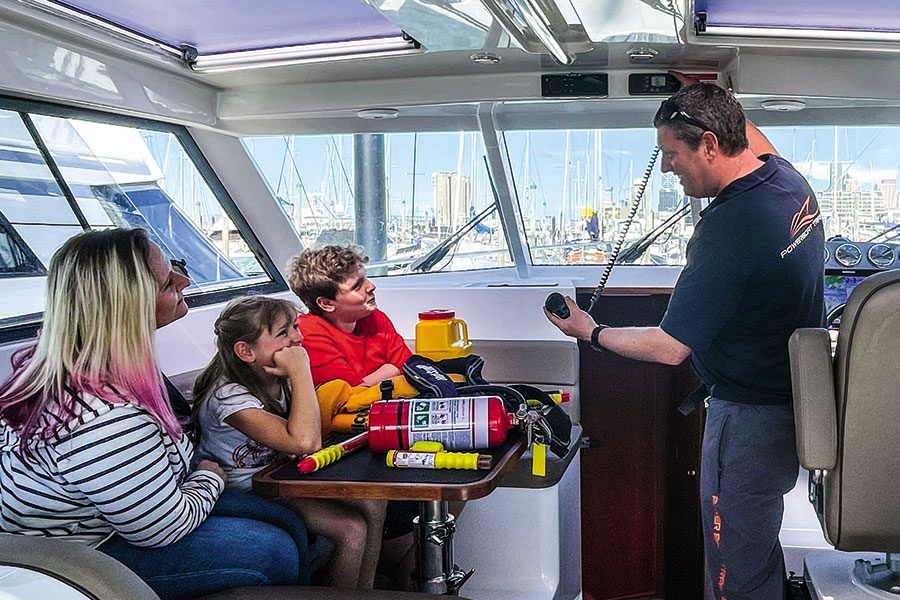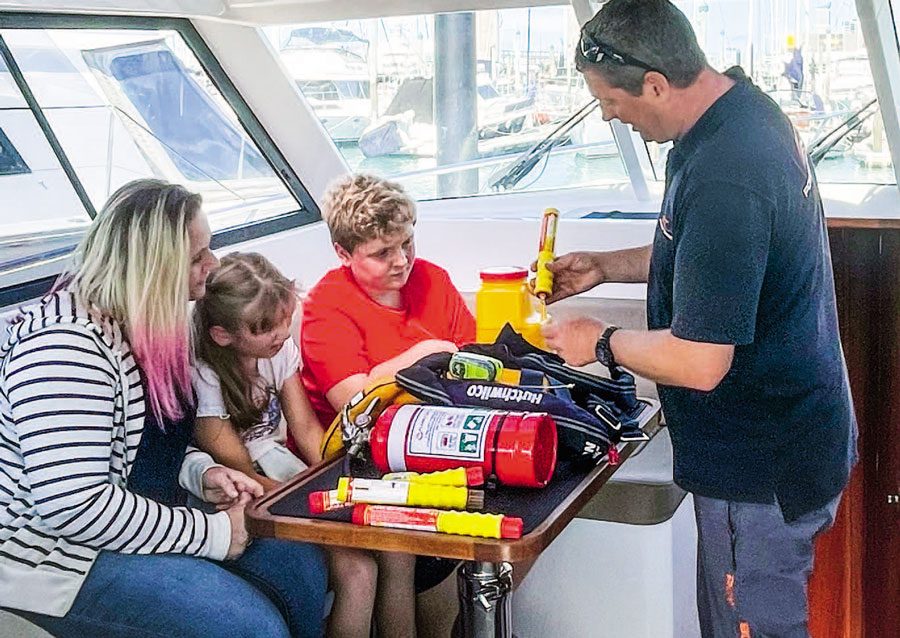

Ensuring everyone onboard knows what to do in the event of an emergency is part of a skipper’s responsibility. Always take the time to brief your crew.
A true story: Some years ago, a family group in a runabout was travelling across a large lake in windy but not unpleasant conditions when the skipper’s cap blew off his head. He immediately stopped the boat and leapt into the water to retrieve it. He was wearing a lifejacket but it wasn’t securely fastened, so it slipped off when he jumped in. A strong swimmer, he left it behind, retrieved his hat and turned to swim back to the boat.
But the strong breeze was blowing the boat away from him. A family member tossed him a line but it fell short and the boat quickly moved away from him faster than he could swim. Within minutes the boat had drifted so far away the man was no longer in sight. His body was found some days later.
So why didn’t someone on the boat drive back and rescue him? Because no-one onboard but the skipper knew how to operate the vessel. It was a tragic, totally preventable accident, but one that is all too familiar.
A man overboard situation is extremely common, but it is just one of dozens of things that can go wrong on the water. Some situations are potentially life-threatening, so it’s important that someone other than the vessel’s skipper should know what to do in case of emergency.
That’s where the safety briefing comes in.

BASIC SAFETY BRIEF CHECKLIST
THE FOLLOWING POINTS ARE IMPORTANT COMPONENTS OF A BASIC SAFETY BRIEF. IT IS IMPERATIVE THAT SOMEONE ABOARD THE VESSEL OTHER THAN THE SKIPPER SHOULD BE ABLE TO IMPLEMENT THEM. LET’S CALL THAT PERSON SECOND IN COMMAND OR 2IC.
1. Let’s start with the really important one. Ensure the 2IC aboard the boat knows how to turn on and use the VHF on Channel 16. In New Zealand the distress button on the radio is not monitored, so help will not necessarily come when you press it.
2. Being able to broadcast a distress message on VHF Channel 16 is great, but if you don’t know how to ascertain your position, it’s not that useful. So ensure your 2IC knows how to turn on the chart plotter if you have one available and how to locate the latitude and longitude – AND how to read it out correctly. If you don’t have a plotter, your 2IC should – as a bare minimum – know how to get a latitude and longitude from their phone (available under compass settings on an iPhone).
3. Lots of boats in New Zealand have that yellow container with the red lid containing flares bought from the chandlers, but few have taken the time to understand what flares the container actually holds. It is important your 2IC knows what type of flares you have on the boat, how to activate them and when they should be used. (Different flares, of which we typically have three varieties in New Zealand, have different uses.) Read the instructions before you need to use them on a dark night in rough seas!
4. You need to explain where all the safety equipment, such as the fire extinguisher, first-aid kit and torches, is kept and how to use it. If you have an EPIRB or PLB, make sure your 2IC knows what it does, how to activate it and when it should be used.
5. Brief your crew on where lifejackets are kept. You should also instruct them on how to activate any inflatable style lifejackets.
I’ve been to many incidents which had poor outcomes because the passengers had mere moments to grab and fit a lifejacket, but failed to don them properly because their skipper complacently told them “there are lifejackets under the seats”.
There are many different types of lifejackets and if your passengers are unfamiliar with them, best of luck with that during a night time emergency or when under the time constraints a fire onboard tends to place you under! A competent skipper gets everyone to at least try on a lifejacket and adjust it to fit so in times of need it’s one less thing to worry about.
When to don lifejackets needs to be risk-assessed and comply with the law.
6. Does your 2IC know how to throw the rescue rope (yes, you absolutely should have one aboard)? If not, you may as well throw it in the bin because divine inspiration will not intervene and guide your 2IC’s hand when you fall off your anchored boat’s stern into a three-knot tide.
7. Your 2IC needs to be able to raise and lower the anchor in emergency situations, such as Point 6 above.
8. Ensuring your ‘regular’ 2IC can start and stop the engine(s) and operate any kill cord is important. If they are not competent boat handlers, they should as a minimum be able to tell where the wind is coming from and drive the vessel upwind of a MOB and shut the engine off to at least give you a chance of swimming to the boat rather than relying on your Olympic swimming skills to chase a boat. Boats can be blown away at surprising speeds.
9. Everybody aboard needs to know the three points of contact rule (aka one hand for the boat). A surprising number of injuries result from people texting and not holding onto the boat when it contacts a wake, resulting in the sort of UFC-style body slam Conor McGregor would be proud of.
10. Brief your crew not to jump off the boat to grab lines – always try to use a boat hook and/or try to lasso cleats with mooring lines. Slips at this point can be very dangerous, particularly if your crew enters the water anywhere near the food processor (propeller).
It’s a tragic shame that the skipper in our true story earlier did not understand the importance of a boat brief – he may still have been with us today if he had.
If you have a New Zealand firearms licence you will know all about the importance of identifying your target – the bullet cannot be put back in the gun once the trigger is pulled. This is not unlike failing to deliver an appropriate safety brief – it’s too late when the skipper suddenly becomes incapacitated or is drifting away from the boat and extremely difficult to deliver when under the duress of an emergency situation.
Brief like your life depends on it, because some day it might! BNZ




